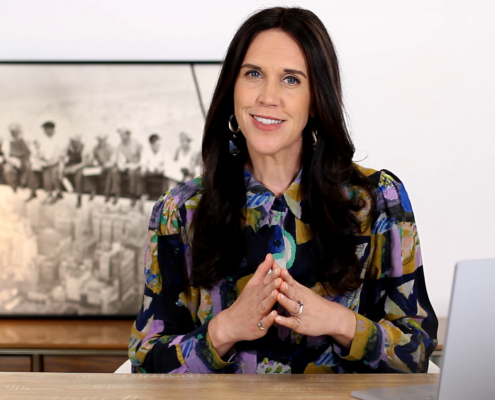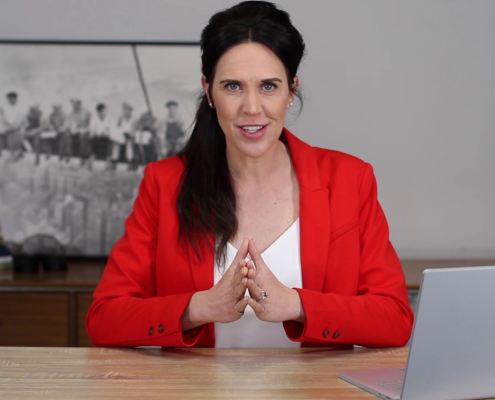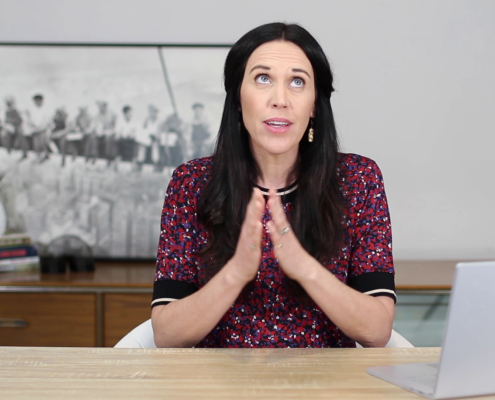Why Is Trust Important?
Trust is a hot topic right now … trust, or lack thereof, has been a precursor to the Australian banking inquiry, it was a theme at the 2018 Australian Governance Summit and most recently Facebook acknowledged it failed to protect 50M of its user profiles of whose personal information was leaked to an analytics company who used it to build a powerful software program to predict and influence choices at the ballot box.
Every day, as consumers, we are required to place our trust in people, objects, corporations …. Whether it is getting the train to work, walking into a building, eating a slice of toast or getting on a ride at an amusement park, we trust that those in charge have provided safe and healthy goods and services.
From an employee perspective, we also trust that our employers will pay us, our taxes and our superannuation. That they will provide a workplace that is safe & healthy and that the risk of harm from our work is minimised.
So how important is trust?
It’s critical.
Scholars and philosophers propose that trust is a precondition to a functioning society – and just as societies need trust, so do organisations.
WHY BUSINESS LEADERS SHOULD READ THIS POST
As a business leader, you are responsible for building and maintaining trust levels amongst your employees and stakeholders.
As discussed in the 2018 Edelman Trust Barometer:
“In order to feel safe delegating important aspects of our lives and well-being to others (e.g. employees who put their health & safety in their employer’s hands), we need to trust them to act with integrity and with our best interests in mind.
Trust, therefore, is at the heart of an individual’s relationship with an institution and, by association, its leadership.
If trust in these institutions diminishes, we begin to fear that we are no longer in safe, reliable hands”.
In this week’s post I will:
- explore the results from the 2018 Edelman Trust Barometer
- dive into the repercussions to workplace health & safety from having low levels of trust in your business
- leave you with some important areas where Executives can use health & safety to build trust.
Global Trust Levels Are Low
According to the 2018 Edelman Trust Barometer (a survey of around 33,000 people from 28 countries), trust levels in four sectors – media (information and knowledge), business (economic well-being), government (national security and public policy), and NGOs (social causes and issues) have declined globally since the 2017 Barometer.
This is in addition to declining trust levels identified in the 2017 Barometer for the above sectors (see my post #6, 2017 in review: What every director needs to have on their health & safety radar in 2018).
In the United States there was a 37-point drop in trust across all institutions – the steepest decline of any country. While China on the other hand experienced a 27-point gain.
In Australia trust fell across all four sectors. Government fell from 37 to 35%, business from 48 to 45%, media from 32 to 31% and NGOs from 52 to 48%.
These results mean that Australia now sits just four percentage points above the world’s least trusted, Russia, and Australia’s Trust Index score places it in the bottom-third of nations.
The 2018 Edelman Trust Barometer has defined 2018 as ‘The battle for Truth”:
“From an institutional standpoint, trust is a forward-looking metric. Unlike reputation, which is based on an organization’s historical behaviour, trust is a predictor of whether stakeholders will find you credible in the future, will embrace new innovations you introduce and will enthusiastically support or defend you.
For these reasons, trust is a valuable asset for all institutions, and ongoing trust-building activities should be one of the most important strategic priorities for every organization”.
Good news for executives
The survey however, brings good news for executives with CEO’s and Boards recording double digit increases in credibility. Even with a decline in trust of the organisations they represent.
Additionally, employers are trusted with 72% of respondents saying that they trust their employer to do what is right.
Respondents firmly believe that building trust is the top priority for CEOs (even ahead of high-quality products and services) with 7 in 10 respondents reporting this.
The business case for trust
As outlined by Stephen Covey:
“some of the consequences of low trust environments, are low morale, disengagement and a lack of commitment. You’ll also see people manipulating, distorting facts and withholding information. There will be resistance to new ideas, bad-mouthing, finger-pointing, overpromising, underdelivering and, often, tension and fear. Everything will take longer to do, and everything will cost more.”
Covey says that when the trust goes up in an organization:
“the speed will go up and costs will come down. Your ability to collaborate goes up, as does your ability to attract, retain and engage people. When trust goes up, you’ll see people sharing information, not afraid to make mistakes, more creativity, higher accountability and greater energy and satisfaction. When you move the needle on trust, you move all kinds of other needles with it.”
We can see, that trust levels should not be mistaken as simply a soft, social virtue; rather, Covey suggests it is a ‘truly hard, economic driver for every organisation’.
The safety case for trust
Where there are low levels of trust in your business, people will actively refuse to truly listen; rather, they will try to discern the meaning behind what you really want from them – this will ultimately hinder your messaging around safety & wellbeing to the business.
Low trust levels will limit your traction in achieving your safety initiatives and implementing change, prevent the full implementation of your safety management system, and cloud your understanding of how well the business is doing at managing its health & safety risks because your team will look to tell you what you want to hear, not what you should hear.
For example, you may not hear of incidents in the business because your employees or your executive team may fear persecution.
On the other hand, studies suggest that trust positively impacts workplace safety:
“Leaders who create a relationship of trust with their subordinates are more likely to create a safe working environment, and to achieve higher and stronger safety-climate perceptions among their subordinates’.
Interpersonal trust, defined as an individual’s willingness to rely on another in a risky situation, has been shown to have several positive effects. It promotes employees’ safety orientation, intentions to modify risk-taking behaviours, engagement in safety citizenship behaviours, and safety performance rates.
Part of the success of trust is attributed to the fact that it promotes high quality social exchange relationships where behaviours are based on mutual obligation and reciprocation. In these relationships, an employee who trusts their supervisor with safety may experience a sense of obligation to ‘repay’ their supervisor’s positive actions by engaging in discretionary acts that benefit workplace safety.
Another way that trust may influence employees’ safety is by increasing the extent to which they are receptive to a supervisor’s influence”.
As such, workplace health & safety is the perfect catalyst for leadership to build trust in their business because health & safety is a unifying point of collaboration.
Can you think of one person in your business, that doesn’t want to go home in the same condition they came there in, or better …? I bet you can’t!
So why not leverage that common need to be safe & healthy, to build trust in your business …?
Here are five important areas where Executives can play a role in building trust by leveraging a commitment to workplace health & safety
Act with integrity
Research has found that integrity (measured through honesty) was the most important attitude in the development of both trust and distrust.
One way you can act with integrity is to actively and consistently prioritise safety and wellbeing to demonstrate it is a primary organisational goal. Start with including safety in your organisation’s values and determine your vision for health & safety.
With CEOs and Directors recording strong trust levels in the 2018 Edelman Trust Barometer, there is a unique opportunity for them to be direct in their health & safety messaging.
Determine and communicate how each person in the business delivers on the vision and expected behaviours. This is not about fluffy statements, document and communicate the above so everyone knows how they contribute, including your executive team.
Remove the excuses
Remove the excuses to making the workplace safer & healthier. If you’re going to push the message ‘safety first’, or ‘there is no job more important than one’s health & wellbeing’, you need to deliver on that message … and be consistent.
Yes, there will be times when your decisions will be perceived as putting profit before safety & wellbeing, but if you are committed to prioritising safety & wellbeing, then we know this is only a perception. However, be comfortable with communicating why you made the decision you did because often, if people understand the ‘why’, they can accept almost anything.
Encourage bad news to travel upwards
Often referred to in health and safety as a fair and just culture, you want to create a framework that balances welcoming bad news, with clarity around where the line must be drawn between acceptable and unacceptable behaviour.
In a fair and just culture, behaviours may fall below expectation however employees may not always be in the wrong as there may be underlying work culture factors or system deficiencies affecting individual or group decision-making.
Build your competence in leading safe & healthy work
Have a sound understanding of health & safety concepts, language, and the risks in your industry and business so that you know what to ask and when to act. By doing so, you will increase your credibility. You will also have more valuable conversations with your health & safety advisor and workforce.
Get out and be visible in your business, have conversations with your workforce on what exactly they do? What are the risks in their work? What do they wish was easier or safer with their work? This may be difficult at first, but those conversations and observations will positively inform your future decisions-making.
Have a good understanding of your critical risks. Know the controls in place to manage those risks. This will help you understand the health & safety impacts from your decisions, so you can assist those on your executive team and the board.
Lead by example
Trust is reciprocal, so if you put your trust in others, they will be more inclined to work at maintaining that trust.
Ernst & Young suggests to share knowledge and information with others by developing networks and forums for connecting people so that tacit knowledge can be shared. Then look to recognise and reward people who directly and proactively share knowledge and promote cooperation and provide individualised support to foster quality interactions between managers and workers.
Overall, every executive should be familiar with how trust is tracking in their organisation, and how health & safety can affect trust. Get a clear picture by conducting your own trust barometer. This could include a company survey with specific focus on trust levels or 360-degree feedback for the executive team.
Now, I’d love to hear from you:
Have you ever conducted a trust survey in your organisation?
What are ways you build or maintain trust in your business?
Leave a comment below and let me know.
Remember, share as much detail as possible in your reply. Your story and/or thoughts may lead to someone’s meaningful breakthrough and it all contributes to this audience knowing what to ask, and when to act.
Important: share your thoughts and ideas directly in the comments. Links to other posts, videos, etc. will be removed.
Thank you so much for your perspective to the conversation!
As always, I look forward to assisting you in Knowing What to Ask, and When to Act #knowWTA
Thanks for reading!








Let us know what you have to say:
Want to join the discussion?Your email address will not be published.